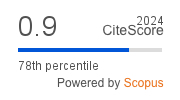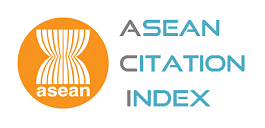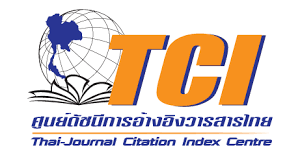Adaptation-Resilience-Innovation Framework for Competitive Advantage during Severe Supply Chain Disruptions
Keywords:
Dynamic capabilities, Supply chain resilience, Business model innovation, Severe disruptionAbstract
This study aims to investigate the roles of firm adaptation, supply chain resilience, and business model innovation in sustaining competitive advantages following a severe supply chain disruption. The study is based on case studies using executive interviews from four Thai retail firms that experienced severe supply chain disruptions and made deliberate responses to such disruptions. The case findings indicate that a firm's adaptation is crucial for building supply chain resilience, which in turn supports the firm's survival when viewed from a reactive approach. Conversely, supply chain resilience forms the basis for business model innovation when considered from a proactive approach, significantly contributing to the maintenance of competitive advantage. The study showcases how retail firms adapt and evolve in the face of significant disruption until they achieve a new level of performance. This insight can be valuable for firms when they encounter major challenges and need to navigate through them effectively. These findings address a gap in the literature by expanding on the dynamic capabilities view through the interactions among firms’ adaptation, supply chain resilience, and business model innovation, as firms navigate severe disruptions and strive to sustain competitive advantage.
References
Aberbach, J. D., & Rockman, B. A. (2002). Conducting and coding elite interviews. PS: Political Science & Politics, 35(4), 673-676.
Abeysekara, N., Wang, H., & Kuruppuarachchi, D. (2019). Effect of supply-chain resilience on firm performance and competitive advantage: A study of the Sri Lankan apparel industry. Business Process Management Journal, 25(7), 1673-1695.
Adobor, H., & McMullen, R. S. (2018). Supply chain resilience: a dynamic and multidimensional approach. The International Journal of Logistics Management.
Ambulkar, S., Blackhurst, J., & Grawe, S. (2015). Firm's resilience to supply chain disruptions: Scale development and empirical examination. Journal of Operations Management, 33, 111-122.
Aslam, H., Khan, A. Q., Rashid, K., & Rehman, S.-u. (2020). Achieving supply chain resilience: the role of supply chain ambidexterity and supply chain agility. Journal of Manufacturing Technology Management, 31(6), 1185-1204.
Bahrami, M., & Shokouhyar, S. (2021). The role of big data analytics capabilities in bolstering supply chain resilience and firm performance: a dynamic capability view. Information Technology & People, 35(5), 1621-1651.
Bocken, N. M., & Geradts, T. H. (2020). Barriers and drivers to sustainable business model innovation: Organization design and dynamic capabilities. Long Range Planning, 53(4), 101950.
Buliga, O., Scheiner, C. W., & Voigt, K.-I. (2016). Business model innovation and organizational resilience: towards an integrated conceptual framework. Journal of Business Economics, 86(6), 647-670.
Clauss, T. (2017). Measuring business model innovation: conceptualization, scale development, and proof of performance. R&d Management, 47(3), 385-403.
Clauss, T., Abebe, M., Tangpong, C., & Hock, M. (2021). Strategic agility, business model innovation, and firm performance: an empirical investigation. IEEE Transactions on Engineering Management, 68(3), 767-784.
Clauss, T., Bouncken, R. B., Laudien, S., & Kraus, S. (2020). Business model reconfiguration and innovation in SMEs: a mixed-method analysis from the electronics industry. International Journal of Innovation Management, 24(02), 2050015.
Crabtree, B. F. (1999). Doing qualitative research. Sage.
Dolgui, A., & Ivanov, D. (2021). Ripple effect and supply chain disruption management: new trends and research directions. In (Vol. 59, pp. 102-109): Taylor & Francis.
Eisenhardt, K. M., & Martin, J. A. (2000). Dynamic capabilities: what are they? Strategic Management Journal, 21(10‐11), 1105-1121.
Forman, J., & Damschroder, L. (2007). Qualitative content analysis. In Empirical methods for bioethics: A primer. Emerald Group Publishing Limited.
Gayed, S., & El Ebrashi, R. (2022). Fostering firm resilience through organizational ambidexterity capability and resource availability: amid the COVID-19 outbreak. International Journal of Organizational Analysis, 31(1), 253-275.
Guba, E. G., & Lincoln, Y. S. (1994). Competing paradigms in qualitative research. Handbook of Qualitative Research, 2(163-194), 105.
Helfat, C. E., & Winter, S. G. (2011). Untangling dynamic and operational capabilities: Strategy for the (N) ever‐changing world. Strategic Management Journal, 32(11), 1243-1250.
Hohenstein, N. O. (2022). Supply chain risk management in the COVID-19 pandemic: strategies and empirical lessons for improving global logistics service providers’ performance. International Journal of Logistics Management.
Hossain, M. (2017). Business model innovation: past research, current debates, and future directions. Journal of Strategy and Management, 10(3), 342-359.
Ivanov, D. (2021). Lean resilience: AURA (Active Usage of Resilience Assets) framework for post-COVID-19 supply chain management. International Journal of Logistics Management.
Juliana, B. (2024). Examining the Impact of Customer Orientation and Digital Adoption on Organizational Resilience in Indonesia’s Banking Sector. Journal of System and Management Sciences, 14(2), 414-426.
Ketokivi, M., & Choi, T. (2014). Renaissance of case research as a scientific method. Journal of Operations Management, 32(5), 232-240.
Ludin, D., Holler, M., Wellbrock, W., & Mueller, E. (2022). How COVID-19 accelerates business model innovation and digital technological transformation in the hospitality industry: A focus on restaurants in Baden–Wuerttemberg. International Journal of Innovation and Technology Management, 19(06), 2242002.
Martins, L. L., Rindova, V. P., & Greenbaum, B. E. (2015). Unlocking the hidden value of concepts: A cognitive approach to business model innovation. Strategic Entrepreneurship Journal, 9(1), 99-117.
Mies, Y. A., & Hausberg, J. P. (2023). Business Model Innovation in Manufacturing Firms: Exploring the Driving Forces of Digital Transformation. International Journal of Innovation & Technology Management, 20(7).
Münch, C., & Hartmann, E. (2022). Transforming resilience in the context of a pandemic: results from a cross-industry case study exploring supply chain viability. International Journal of Production Research, 1-19.
Nikookar, E., & Yanadori, Y. (2022). Preparing supply chain for the next disruption beyond COVID-19: managerial antecedents of supply chain resilience. International Journal of Operations and Production Management, 42(1), 59-90.
Ocasio, W. (1997). Towards an attention‐based view of the firm. Strategic Management Journal, 18(S1), 187-206.
Parast, M. M., & Subramanian, N. (2020). An examination of the effect of supply chain disruption risk drivers on organizational performance: evidence from Chinese supply chains. Supply Chain Management, 26(4), 548-562.
Parker, H., & Ameen, K. (2018). The role of resilience capabilities in shaping how firms respond to disruptions. Journal of Business Research, 88, 535-541.
Ponomarov, S. Y., & Holcomb, M. C. (2009). Understanding the concept of supply chain resilience. The International Journal of Logistics Management, 20(1), 124-143.
Roscoe, S., & Blome, C. (2019). Understanding the emergence of redistributed manufacturing: an ambidexterity perspective. Production Planning & Control, 30(7), 496-509.
Saebi, T., Lien, L., & Foss, N. J. (2017). What drives business model adaptation? The impact of opportunities, threats and strategic orientation. Long range planning, 50(5), 567-581.
Schoemaker, P. J., Heaton, S., & Teece, D. (2018). Innovation, dynamic capabilities, and leadership. California Management Review, 61(1), 15-42.
Scholten, K., Stevenson, M., & van Donk, D. P. (2019). Dealing with the unpredictable: supply chain resilience. International Journal of Operations & Production Management.
Solarino, A. M., & Aguinis, H. (2021). Challenges and best‐practice recommendations for designing and conducting interviews with elite informants. Journal of Management studies, 58(3), 649-672.
Sosna, M., Trevinyo-Rodríguez, R. N., & Velamuri, S. R. (2010). Business model innovation through trial-and-error learning: The Naturhouse case. Long Range planning, 43(2-3), 383-407.
Stubbart, C. I. (1989). Managerial cognition: a missing link in strategic management research. Journal of Management Studies, 26(4), 325-347.
Teece, D. J. (2007). Explicating dynamic capabilities: the nature and microfoundations of (sustainable) enterprise performance. Strategic Management Journal, 28(13), 1319-1350.
Teece, D. J., Pisano, G., & Shuen, A. (1997). Dynamic capabilities and strategic management. Strategic Management Journal, 18(7), 509-533.
Wieland, A., & Durach, C. F. (2021). Two perspectives on supply chain resilience. Journal of Business Logistics, 42(3), 315-322.
Wieland, A., & Wallenburg, C. M. (2012). Dealing with supply chain risks: Linking risk management practices and strategies to performance. International Journal of Physical Distribution & Logistics Management, 42(10), 887-905.
Wong, C. W., Lirn, T.-C., Yang, C.-C., & Shang, K.-C. (2020). Supply chain and external conditions under which supply chain resilience pays: An organizational information processing theorization. International Journal of Production Economics, 226, 107610.
Zahra, S. A., Sapienza, H. J., & Davidsson, P. (2006). Entrepreneurship and dynamic capabilities: A review, model and research agenda. Journal of Management Studies, 43(4), 917-955.
Zhang, H., Xiao, H., Wang, Y., Shareef, M. A., Akram, M. S., & Goraya, M. A. S. (2021). An integration of antecedents and outcomes of business model innovation: A meta-analytic review. Journal of Business Research, 131, 803-814.
Downloads
Published
How to Cite
Issue
Section
License
Copyright (c) 2025 Thammasat Review

This work is licensed under a Creative Commons Attribution-NonCommercial-NoDerivatives 4.0 International License.
The opinions and ideas expressed in all submissions published in Thammasat Review are solely that of the author(s) and do not necessarily reflect that of the editors or the editorial board.
The copyright of all articles including all written content and illustrations belong to Thammasat Review. Any individuals or organisation wishing to publish, reproduce and distribute a particular manuscript must seek permission from the journal first.








